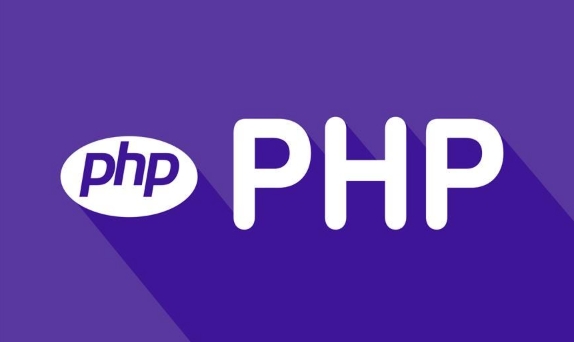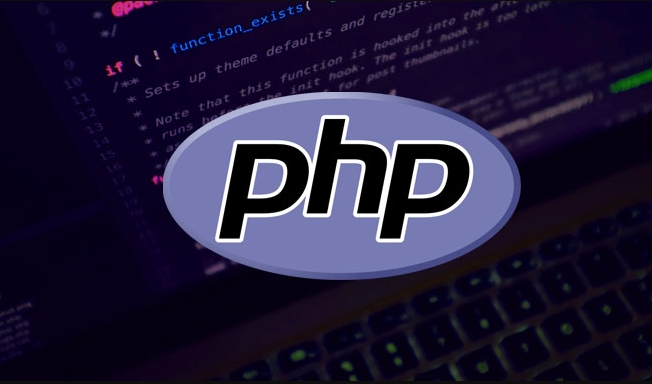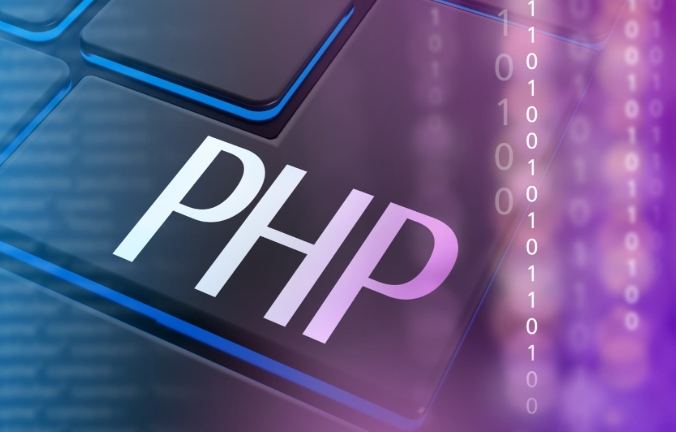Whether or not the PHP framework is necessary depends on project requirements and development habits. For medium and large projects, using frameworks can improve code quality and save development time because frameworks provide standardized structures (such as MVC mode), built-in common functions (such as database operations, routing, authentication), enhanced security (such as anti-SQL injection), and integrated auxiliary tools (such as cache, queues). 1. The advantages of the framework include: standardizing code structure, improving maintenance, accelerating development speed, enhancing security, and integrating common functions. 2. The situation where the framework is not used is: small or one-time project, high-performance requirements scenarios, and basic skills practice during the learning stage. 3. When using the framework, you need to pay attention to: high learning costs, limited flexibility, and performance overhead. It is recommended to choose a suitable framework based on the project size and personal abilities and start practicing from a small project.

Is it necessary to use the PHP framework? There is actually no absolute answer to this question, it depends on your project requirements and development habits. Simply put, frameworks can help you save time and improve code quality, but they will also bring some learning costs and limitations. If you just write a simple page or gadget, there may be no need to use a framework; but if it is a medium-sized project, not using a framework may make it troublesome to maintain later.

1. What are the core advantages of the PHP framework?
The biggest role of the framework is "standardization" and "automation". It provides a set of clear structure development methods, such as the MVC (Model-View-Controller) mode, making your code easier to read and maintain. At the same time, most mainstream frameworks (such as Laravel and Symfony) have built-in functions such as database operations, routing management, and user authentication to avoid duplicate wheel creation.

For example:
If you want to implement a login function, you must handle a lot of details such as form verification, database query, session management, etc. If you use Laravel, a lot of logic can directly call ready-made methods, saving a lot of time.
Common benefits include:

- Better code organization structure
- Provide security mechanisms (such as preventing SQL injection)
- Integrate common functions (such as cache, queue, task scheduling)
2. When can I not use the framework?
Not all projects require frameworks. If your task is simple enough, such as doing a static page display, data statistics script, or just forwarding an API interface, it can be implemented using native PHP, which is lighter and faster to deploy.
In addition, if you are a novice and just start learning PHP, it is not recommended to go to the framework at the beginning. First understand the concepts of basic syntax, functions, arrays, and object-oriented, and then transitioning to a framework will make it easier to get started.
Suitable for situations where there is no framework:
- Small project or one-time script
- Extremely high performance requirements (although the gap is usually not large)
- In the learning stage, I want to practice basic skills
3. What should I pay attention to when using the framework?
The framework is good, but not omnipotent. There are several things that are easy to ignore when using:
- Learning curve : Each framework has its own rules and terms, such as Laravel's Service Provider, middleware, Facade, etc. You may feel a little dizzy when you first come into contact.
- Limited flexibility : In some scenarios, you may want to "do it your own way", but the design idea of ??the framework may not necessarily support it.
- Performance overhead : The framework itself will do more initialization work, which will have little impact on small projects, but optimization may be required in high concurrency scenarios.
suggestion:
- Don’t blindly pursue the “most popular” framework, just choose one with complete documents and active community.
- In the early stage, you can start with small projects and learn while using them.
- Pay attention to the code structure and naming specifications, and don’t write it in a mess just because you use the framework.
Basically that's it. Whether to use the PHP framework depends on the complexity of the project and personal habits. Framework is not a must, but it can help you get less trapped, especially in projects where multiple people collaborate or long-term maintenance is done.
The above is the detailed content of is it necessary to use a php framework. For more information, please follow other related articles on the PHP Chinese website!

Hot AI Tools

Undress AI Tool
Undress images for free

Undresser.AI Undress
AI-powered app for creating realistic nude photos

AI Clothes Remover
Online AI tool for removing clothes from photos.

Clothoff.io
AI clothes remover

Video Face Swap
Swap faces in any video effortlessly with our completely free AI face swap tool!

Hot Article

Hot Tools

Notepad++7.3.1
Easy-to-use and free code editor

SublimeText3 Chinese version
Chinese version, very easy to use

Zend Studio 13.0.1
Powerful PHP integrated development environment

Dreamweaver CS6
Visual web development tools

SublimeText3 Mac version
God-level code editing software (SublimeText3)

Hot Topics
 What are some best practices for versioning a PHP-based API?
Jun 14, 2025 am 12:27 AM
What are some best practices for versioning a PHP-based API?
Jun 14, 2025 am 12:27 AM
ToversionaPHP-basedAPIeffectively,useURL-basedversioningforclarityandeaseofrouting,separateversionedcodetoavoidconflicts,deprecateoldversionswithclearcommunication,andconsidercustomheadersonlywhennecessary.StartbyplacingtheversionintheURL(e.g.,/api/v
 How do I implement authentication and authorization in PHP?
Jun 20, 2025 am 01:03 AM
How do I implement authentication and authorization in PHP?
Jun 20, 2025 am 01:03 AM
TosecurelyhandleauthenticationandauthorizationinPHP,followthesesteps:1.Alwayshashpasswordswithpassword_hash()andverifyusingpassword_verify(),usepreparedstatementstopreventSQLinjection,andstoreuserdatain$_SESSIONafterlogin.2.Implementrole-basedaccessc
 What are weak references (WeakMap) in PHP, and when might they be useful?
Jun 14, 2025 am 12:25 AM
What are weak references (WeakMap) in PHP, and when might they be useful?
Jun 14, 2025 am 12:25 AM
PHPdoesnothaveabuilt-inWeakMapbutoffersWeakReferenceforsimilarfunctionality.1.WeakReferenceallowsholdingreferenceswithoutpreventinggarbagecollection.2.Itisusefulforcaching,eventlisteners,andmetadatawithoutaffectingobjectlifecycles.3.YoucansimulateaWe
 What are the differences between procedural and object-oriented programming paradigms in PHP?
Jun 14, 2025 am 12:25 AM
What are the differences between procedural and object-oriented programming paradigms in PHP?
Jun 14, 2025 am 12:25 AM
Proceduralandobject-orientedprogramming(OOP)inPHPdiffersignificantlyinstructure,reusability,anddatahandling.1.Proceduralprogrammingusesfunctionsorganizedsequentially,suitableforsmallscripts.2.OOPorganizescodeintoclassesandobjects,modelingreal-worlden
 How can you handle file uploads securely in PHP?
Jun 19, 2025 am 01:05 AM
How can you handle file uploads securely in PHP?
Jun 19, 2025 am 01:05 AM
To safely handle file uploads in PHP, the core is to verify file types, rename files, and restrict permissions. 1. Use finfo_file() to check the real MIME type, and only specific types such as image/jpeg are allowed; 2. Use uniqid() to generate random file names and store them in non-Web root directory; 3. Limit file size through php.ini and HTML forms, and set directory permissions to 0755; 4. Use ClamAV to scan malware to enhance security. These steps effectively prevent security vulnerabilities and ensure that the file upload process is safe and reliable.
 How can you interact with NoSQL databases (e.g., MongoDB, Redis) from PHP?
Jun 19, 2025 am 01:07 AM
How can you interact with NoSQL databases (e.g., MongoDB, Redis) from PHP?
Jun 19, 2025 am 01:07 AM
Yes, PHP can interact with NoSQL databases like MongoDB and Redis through specific extensions or libraries. First, use the MongoDBPHP driver (installed through PECL or Composer) to create client instances and operate databases and collections, supporting insertion, query, aggregation and other operations; second, use the Predis library or phpredis extension to connect to Redis, perform key-value settings and acquisitions, and recommend phpredis for high-performance scenarios, while Predis is convenient for rapid deployment; both are suitable for production environments and are well-documented.
 What are the differences between == (loose comparison) and === (strict comparison) in PHP?
Jun 19, 2025 am 01:07 AM
What are the differences between == (loose comparison) and === (strict comparison) in PHP?
Jun 19, 2025 am 01:07 AM
In PHP, the main difference between == and == is the strictness of type checking. ==Type conversion will be performed before comparison, for example, 5=="5" returns true, and ===Request that the value and type are the same before true will be returned, for example, 5==="5" returns false. In usage scenarios, === is more secure and should be used first, and == is only used when type conversion is required.
 How do I perform arithmetic operations in PHP ( , -, *, /, %)?
Jun 19, 2025 pm 05:13 PM
How do I perform arithmetic operations in PHP ( , -, *, /, %)?
Jun 19, 2025 pm 05:13 PM
The methods of using basic mathematical operations in PHP are as follows: 1. Addition signs support integers and floating-point numbers, and can also be used for variables. String numbers will be automatically converted but not recommended to dependencies; 2. Subtraction signs use - signs, variables are the same, and type conversion is also applicable; 3. Multiplication signs use * signs, which are suitable for numbers and similar strings; 4. Division uses / signs, which need to avoid dividing by zero, and note that the result may be floating-point numbers; 5. Taking the modulus signs can be used to judge odd and even numbers, and when processing negative numbers, the remainder signs are consistent with the dividend. The key to using these operators correctly is to ensure that the data types are clear and the boundary situation is handled well.






